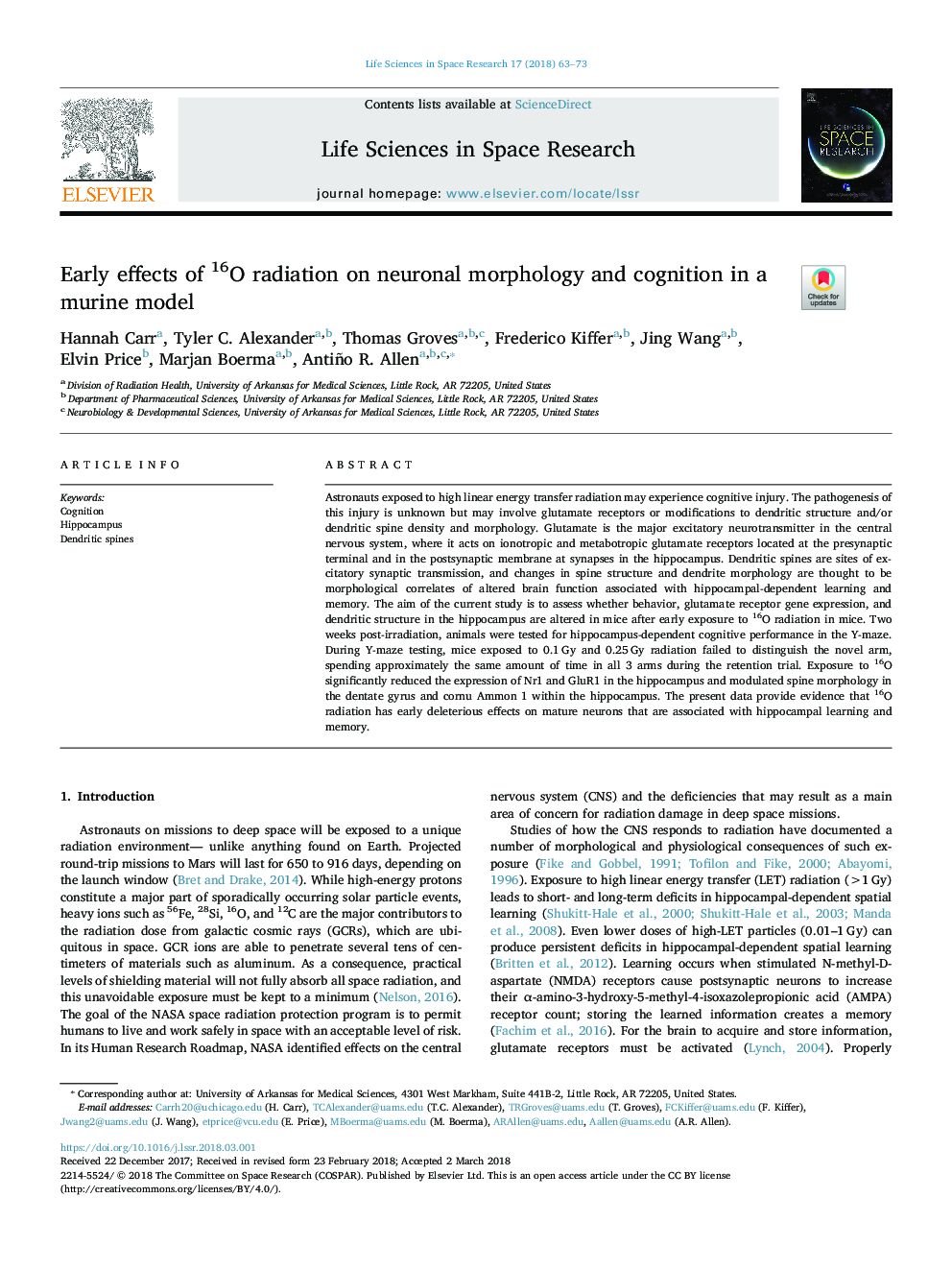| Article ID | Journal | Published Year | Pages | File Type |
|---|---|---|---|---|
| 8247920 | Life Sciences in Space Research | 2018 | 11 Pages |
Abstract
Astronauts exposed to high linear energy transfer radiation may experience cognitive injury. The pathogenesis of this injury is unknown but may involve glutamate receptors or modifications to dendritic structure and/or dendritic spine density and morphology. Glutamate is the major excitatory neurotransmitter in the central nervous system, where it acts on ionotropic and metabotropic glutamate receptors located at the presynaptic terminal and in the postsynaptic membrane at synapses in the hippocampus. Dendritic spines are sites of excitatory synaptic transmission, and changes in spine structure and dendrite morphology are thought to be morphological correlates of altered brain function associated with hippocampal-dependent learning and memory. The aim of the current study is to assess whether behavior, glutamate receptor gene expression, and dendritic structure in the hippocampus are altered in mice after early exposure to 16O radiation in mice. Two weeks post-irradiation, animals were tested for hippocampus-dependent cognitive performance in the Y-maze. During Y-maze testing, mice exposed to 0.1â¯Gy and 0.25â¯Gy radiation failed to distinguish the novel arm, spending approximately the same amount of time in all 3 arms during the retention trial. Exposure to 16O significantly reduced the expression of Nr1 and GluR1 in the hippocampus and modulated spine morphology in the dentate gyrus and cornu Ammon 1 within the hippocampus. The present data provide evidence that 16O radiation has early deleterious effects on mature neurons that are associated with hippocampal learning and memory.
Keywords
Related Topics
Physical Sciences and Engineering
Earth and Planetary Sciences
Space and Planetary Science
Authors
Hannah Carr, Tyler C. Alexander, Thomas Groves, Frederico Kiffer, Jing Wang, Elvin Price, Marjan Boerma, Antiño R. Allen,
